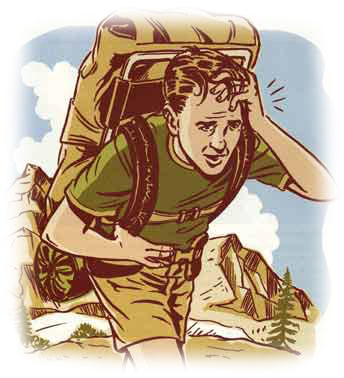 Different people have different sustainability to altitude sickness. For some people who are otherwise healthy, altitude sickness can become visible at around 2000 meters i.e. 6500 ft above sea level. Mountain ski resorts are the most common places where symptoms of altitude sickness begin to become visible.
Different people have different sustainability to altitude sickness. For some people who are otherwise healthy, altitude sickness can become visible at around 2000 meters i.e. 6500 ft above sea level. Mountain ski resorts are the most common places where symptoms of altitude sickness begin to become visible.
Symptoms:
Symptoms often become clear after six to ten hours after the ascent and usually subside in one or two days. But sometimes, they can develop into more serious conditions. The most common symptoms are headache, fatigue, stomach illness, dizziness and sleep disturbance. It is also said that exertion can worsen the symptoms.
Primary Symptoms:
Headache is the primary symptom used to detect altitude sickness. But sometimes, a headache is also a symptom of dehydration. Thus to diagnose altitude sickness, headache is combined with one or more of the other symptoms.
Some of the other symptoms are:
- 1. Nausea, vomiting, lack of appetite
- 2. Fatigue
- 3. Dizziness
- 4. Insomnia
- 5. Nosebleed
- 6. Drowsiness
- 7. Breathlessness upon exertion
- 8. Persistent rapid pulse
- 9. Swelling of hands, feet and face- peripheral oedema
Severe Symptoms:
Severe symptoms of altitude sickness can be life threatening and need immediate medical attention.
Some of the severe symptoms are as follows:
- 1. Fluid in the lungs (Pulmonary edema)
- 2. Symptoms similar to bronchitis
- 3. Dry cough
- 4. Fever
- 5. Swelling of the brain ( Cerebral edema)
- 6. Increased nausea
- 7. Unsteady gait
The most serious symptoms can occur from edema i.e. fluids accumulate in the tissues of the body.
Treatment:
The most reliable treatment and sometimes the only available option is to descend. Attempts to treat or try to stabilise the patient at high altitude can be high dangerous unless highly controlled medical facilities are available. Nevertheless, the following treatments are used if it’s impossible to change the patient’s location and the circumstances are permanent.
- 1. Oxygen can be used for mild to moderate AMS below 12, ooo feet. It is normally provided by doctors available at mountain resorts. Symptoms subside with 12-36 hours without the need to descend.
- 2. In more serious cases, a Gamow bag i.e. a portable plastic hyperbaric chamber inflated with a foot pump is used to reduce the altitude by as much as 5000 ft.
- 3. Acetazolamide drug is also used in altitude adaptation. It immediately relieves symptoms, improves arterial oxygenation etc.
Apart from these, increased water intake helps in altitude adaptation. It helps in replacing fluids lost through heavy breathing in the dry air found at high altitude. However, it is necessary to make sure that fluids shouldn’t be consumed excessively as it can lead to over hydration which can be equally dangerous. It is also advisable to limit alcohol intake at very high altitudes.
Also, oxygen from gas bottles or liquid containers can be applied directly through a nasal canula or a mask. The use of Nitric Oxide has been proved to relieve altitude sickness. Scientists believe that nitric oxide is an important part of the human physiological response to altitude sickness. Rate: 8/10. This was okay. Sometimes, repetition of similar words can bore the reader. I personally think, the too much of ‘altitude’ word in the intro can kill the fun of reading the article. Else, it was okay.


 Cart : 0 items - $0.00
Cart : 0 items - $0.00










